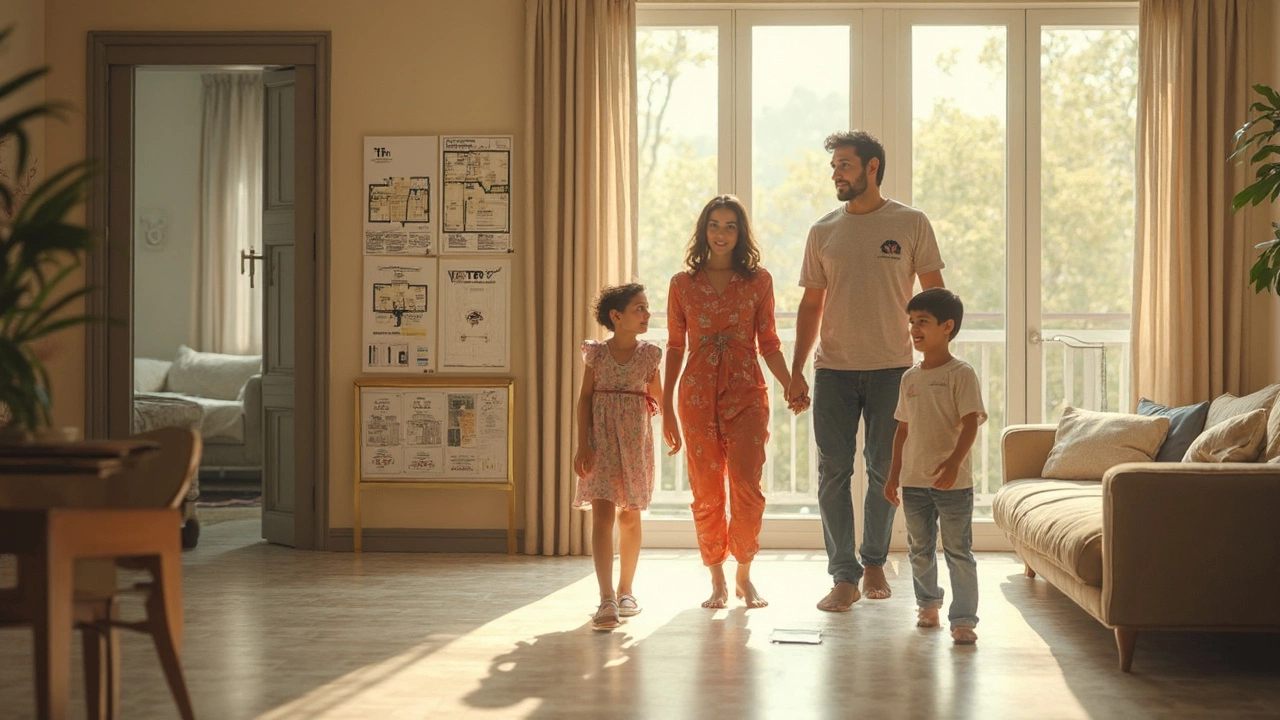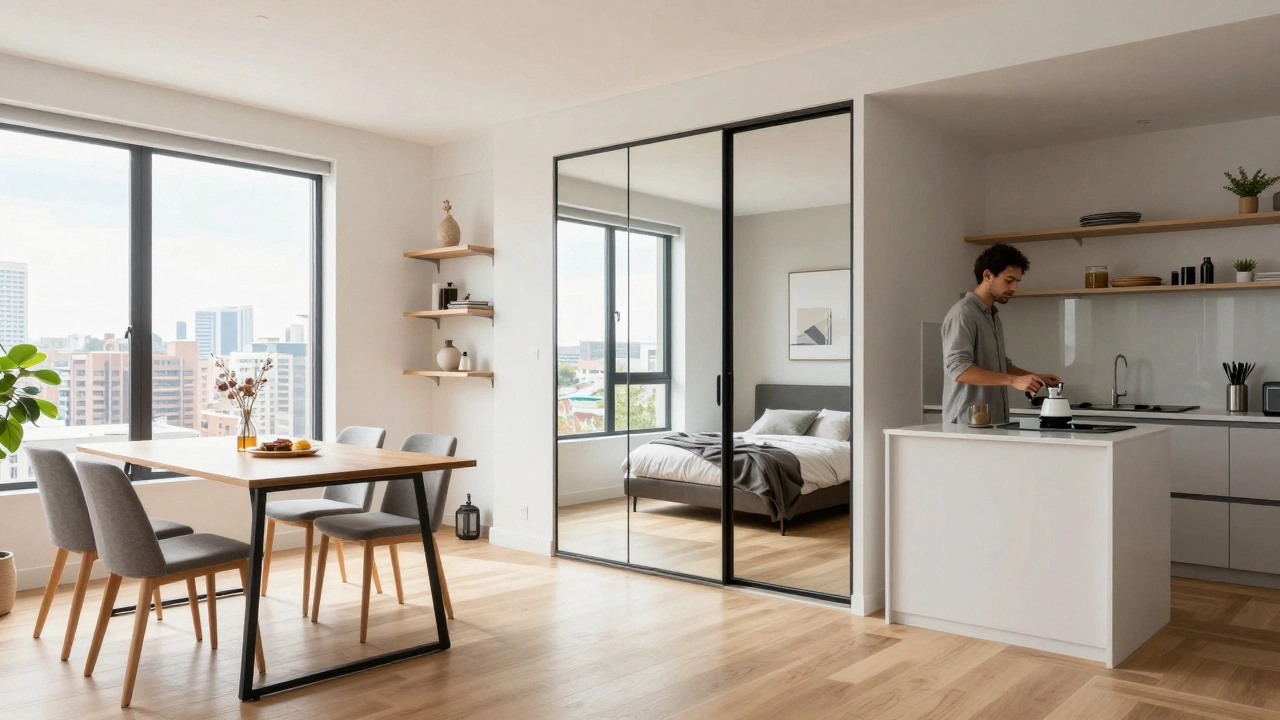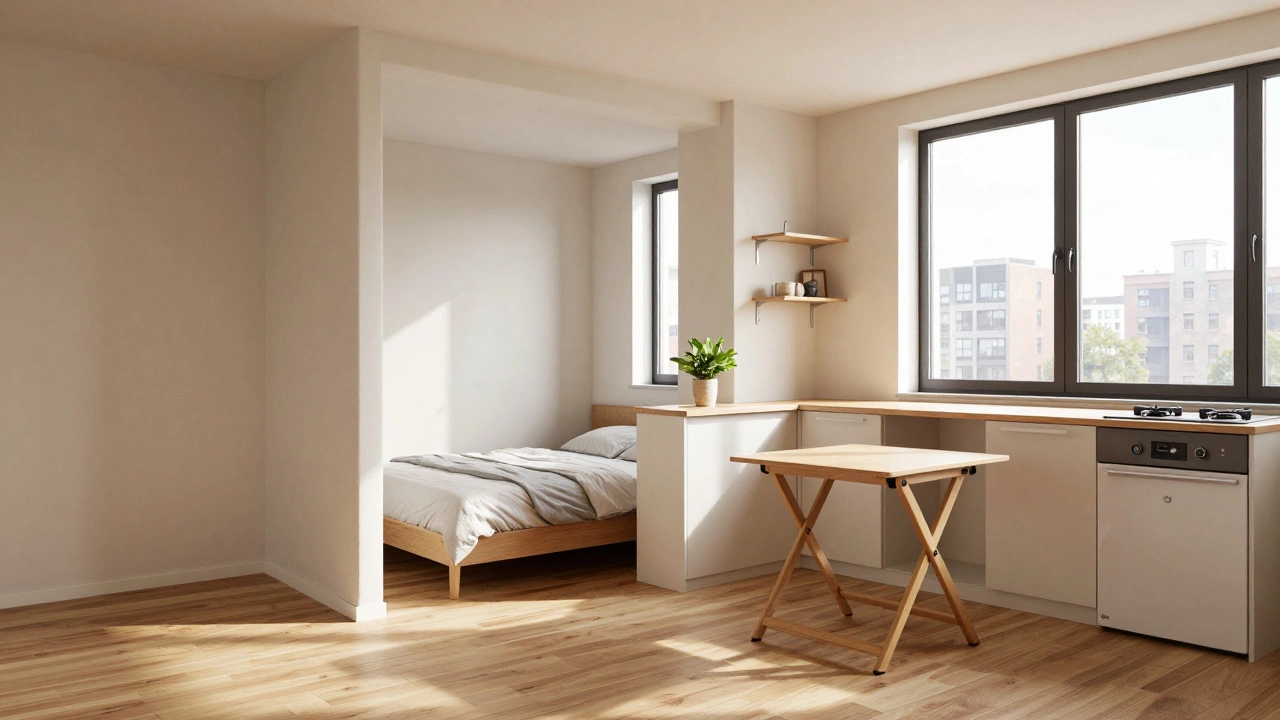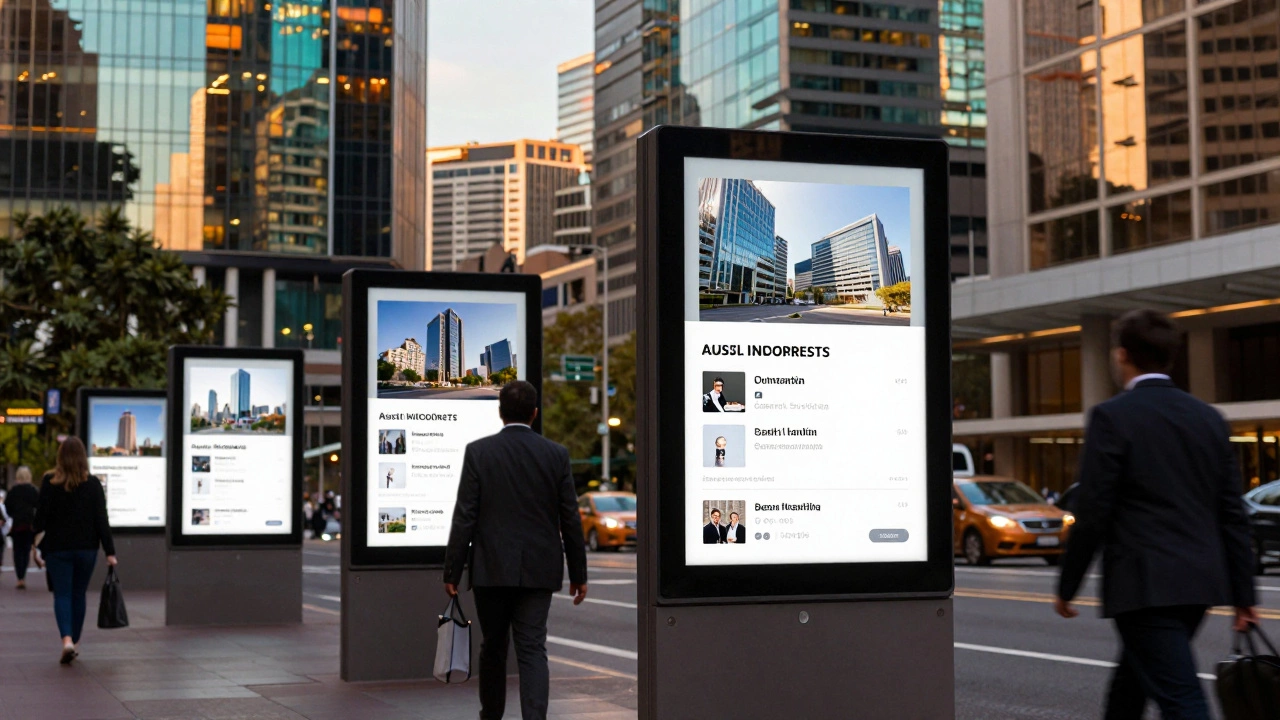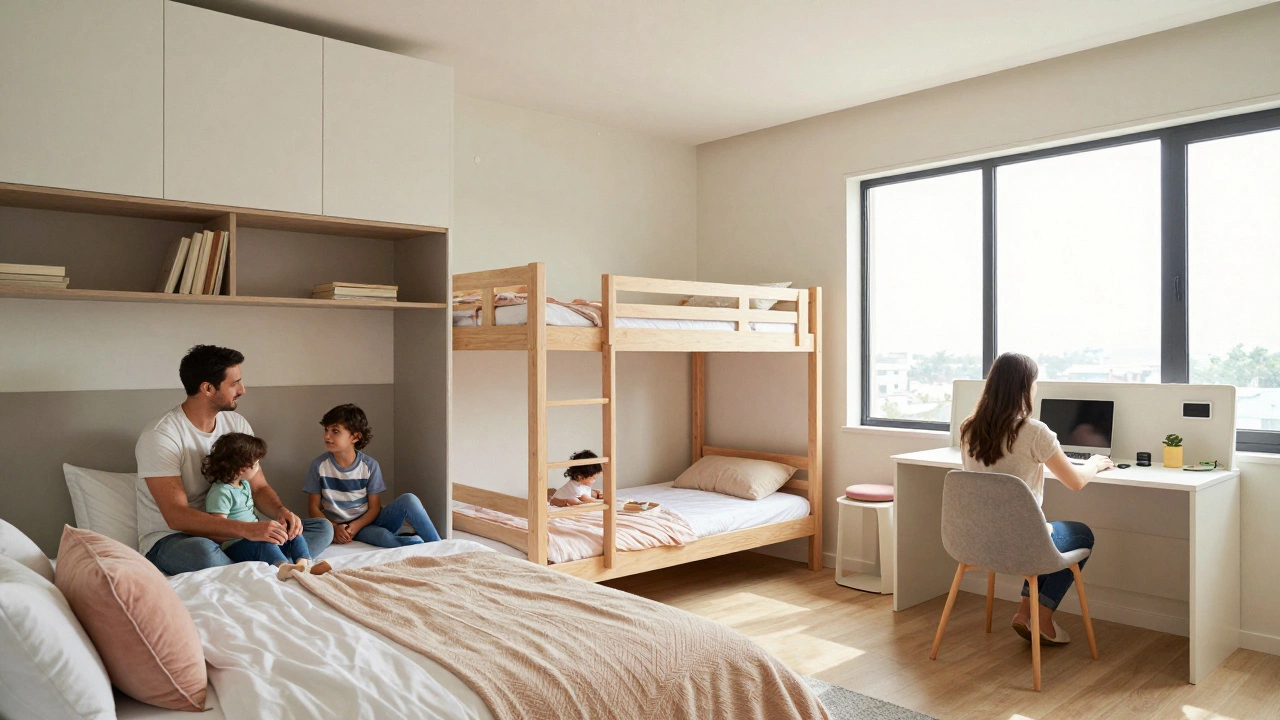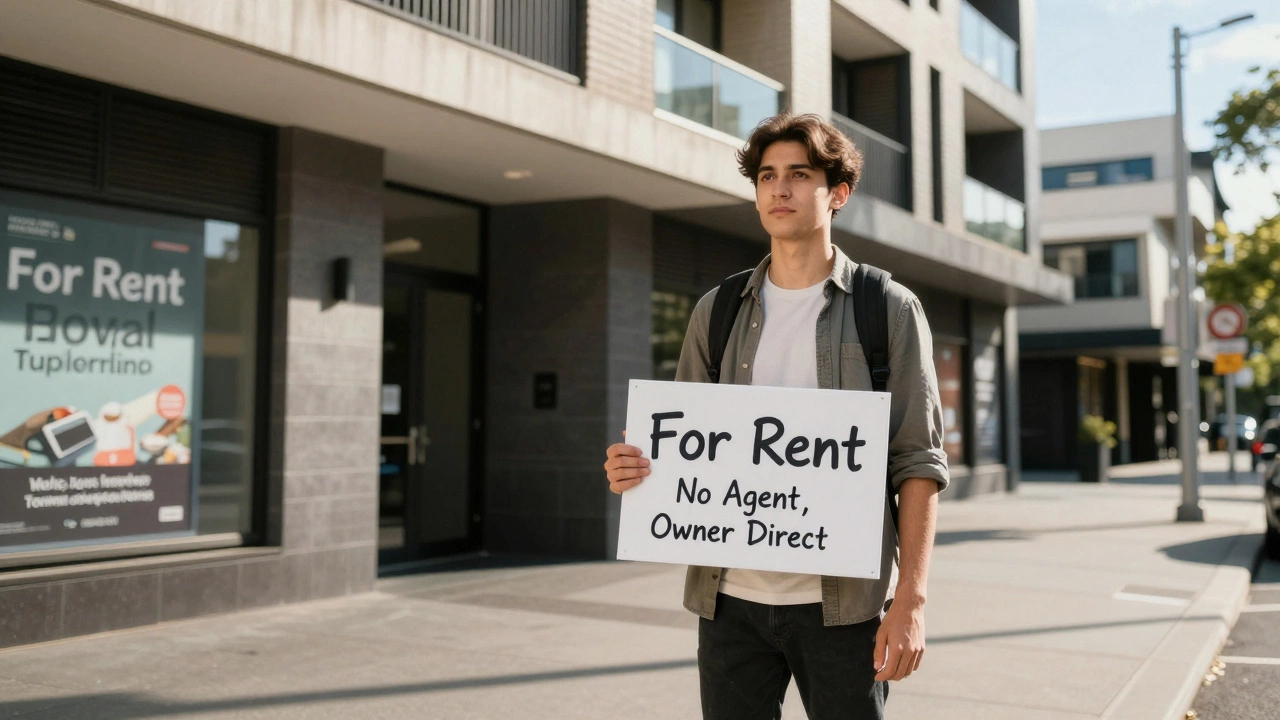T4 apartment? Yeah, these codes can throw anyone off when apartment shopping. If you’re used to the classic Indian 2BHK term, 'T4' pops up and suddenly it feels like you’re looking at a puzzle instead of a floor plan. The truth is, T4 comes from a different way of labeling homes—mostly seen in Europe and French-speaking countries.
Instead of bedrooms and halls, these letter-number combos break down like this: the 'T' stands for 'Type,' and the number tells you how many main rooms (not bathrooms or kitchens) are in the apartment. So, a T4 means you’re looking at four main rooms—usually three bedrooms and one living room. That’s why it often lines up closely with what you’d call a 3BHK in India, not a 2BHK. But developers sometimes use these terms loosely, mixing up local and international ways of counting. That’s where things get confusing.
- What Does T4 Actually Mean?
- How T4 Compares to 2BHK
- Tips for Apartment Hunting
- Things to Watch Out For
What Does T4 Actually Mean?
When home listings mention T4, most people are left scratching their heads, especially if you’re familiar with the Indian 2BHK style. T4 is actually a European real estate label, popular in places like France, Portugal, and parts of Africa. Here, the ‘T’ means ‘Type’ (sometimes you’ll see ‘F’ for ‘Function’), and the number shows the count of main living spaces. These main spaces include bedrooms and the living/dining room—but not the kitchen or bathrooms.
So, in a nutshell, a T4 has four big rooms. That usually means three bedrooms plus a living room. Sizes are not fixed, but you’ll rarely find T4 apartments with less than 70 square meters (about 750 square feet), and many go up to 120 square meters or more, especially in newer complexes.
- ‘T1’ = One main room (like a studio or a tiny 1BHK)
- ‘T2’ = Two rooms (usually 1 bedroom + living)
- ‘T3’ = Three rooms (2 bedrooms + living)
- T4 apartment = Four rooms (3 bedrooms + living)
Here’s a quick snapshot for comparison:
| Type | Number of Rooms | Typical Usage |
|---|---|---|
| T2 | 2 | 1 Bedroom + Living |
| T3 | 3 | 2 Bedrooms + Living |
| T4 | 4 | 3 Bedrooms + Living |
| 2BHK | 2 | 2 Bedrooms + Hall/Kitchen |
The twist: some listings can get a little creative with definitions. Always ask for the floor plan, because what one seller calls a T4 could have a totally different setup from another. It’s especially true if you’re looking at imported real estate brochures, or if an Indian builder is trying to market to NRIs using European terms.
How T4 Compares to 2BHK
This is where people get tripped up. A lot of folks see "T4 apartment" and instantly think it means the same thing as a 2BHK, but the math doesn’t quite add up. In India, 2BHK means a home with two bedrooms, a hall (basically your living room), and a kitchen. Bathrooms aren’t counted in this code. But in the T4 apartment world (especially in Europe or Africa), the number 4 means the apartment has four main rooms excluding bathrooms and kitchen. That usually means three bedrooms and one living room, or sometimes two bedrooms plus a study and a hall.
Here’s a side-by-side look so you don’t have to guess:
| Type | Main Rooms | Bedrooms | Living Room | Other Spaces |
|---|---|---|---|---|
| T4 Apartment | 4 | 3 (sometimes 2 + study) | 1 | Kitchen + Bathrooms |
| 2BHK | 3 | 2 | 1 (Hall) | Kitchen + Bathrooms |
Notice the jump? T4 usually gives you an extra room compared to a standard 2BHK. If you’re searching for a place and see a T4 listed in the description, double check the layout before you fall in love with the ad because in most cases, you’re actually looking at what we’d call a 3BHK here.
One more thing: space and room count can change based on the country and even the developer. In India, 2BHK layouts average 900-1200 sq ft, while a T4 (aka 3BHK) in Europe or Mauritius might go up to 1200-1500 sq ft or more. So, if you really want the extra space, keep an eye on the actual size, not just the name.
- If the listing says T4, expect at least three bedrooms and a living room.
- 2BHK means two bedrooms and one living room, nothing extra.
- Ask for floor plans—never hurts!
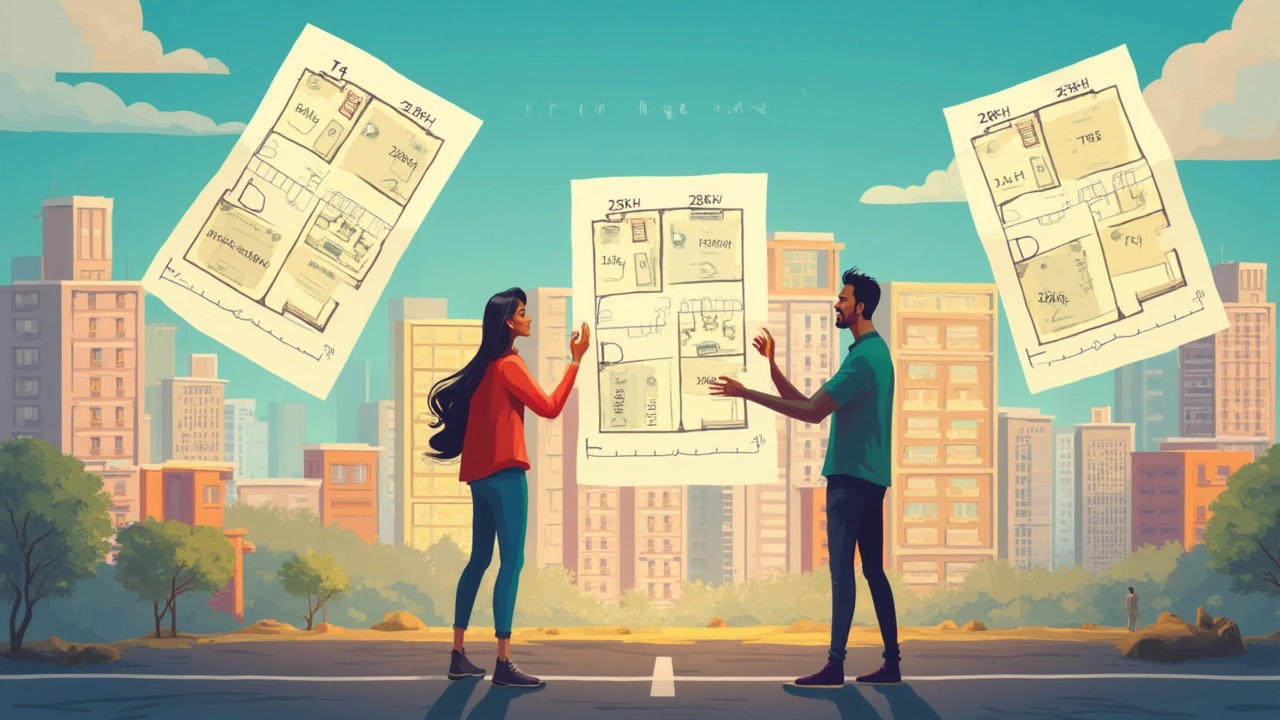
Tips for Apartment Hunting
Finding the right apartment isn’t just about going with the flow. The labels like T4 or 2BHK can get tricky, so here’s how you can keep your apartment search sharp and smart.
- T4 apartment means different things in different places. In India, most people still use 2BHK and 3BHK labels, but in Europe, T4 usually means three bedrooms plus a living room. Always ask to see the actual floor plan—don’t just trust the code.
- Ask about carpet area. A T4 apartment might sound big, but sometimes that includes balconies, lobbies, or even parking spaces. The issued 'super built-up area' can inflate the size by 20 to 30%. You want to know the real usable space.
- Compare price per square foot, not just total price. Some apartments look affordable until you realize you’re paying for a lot of unusable corners. Developers sometimes group tiny rooms as 'main rooms' just to claim a T4 status.
- Location matters more than an extra room. Easy access to work, good schools, hospitals, and local shops will make your daily life smoother. A huge apartment on the outskirts might be cheaper, but if you spend two hours stuck in traffic, it’s not worth it.
To give you a snapshot of how different countries label apartments, check out this quick table:
| Label | Common Meaning | Typical Layout |
|---|---|---|
| 2BHK (India) | 2 Bedrooms, Hall, Kitchen | Living + 2 beds |
| T4 (France/Portugal) | 4 Main rooms | Living + 3 beds |
| 3BHK (India) | 3 Bedrooms, Hall, Kitchen | Living + 3 beds |
Also, don’t skip the basics:
- Check for natural light and good ventilation. A fancy label means nothing if you end up in a dark, stuffy place.
- Test the mobile network—dead zones are way too common in some new buildings.
- Visit at different times of day to catch rush hour traffic and noise levels.
- Read all terms in your rental or purchase agreement. Some places hide extra maintenance charges or have strict rules for pets and visitors.
The bottom line: Don't let trendy apartment codes confuse you. Ask questions, compare closely, and think about what actually fits your lifestyle before signing anything.
Things to Watch Out For
It’s easy to get tripped up by apartment codes, and T4 is no exception. First off, don’t assume every T4 apartment is the same—it depends on the country and even the developer. In some listings, a T4 might be described as a three-bedroom spot with one living room, but in other cases, the rooms could include a dining room or even a big office. Always ask for a floor plan before making a decision.
People often mix up T4 with 2BHK or 3BHK, especially in international markets where terms overlap. If you’re searching for a 2BHK, ask the agent to break down exactly what you’re getting. Some ads just use a T4 apartment tag to attract buyers looking for bigger spaces, even if the actual layout doesn’t fit what you need.
- Check room sizes—some T4 apartments look big on paper but have one tiny bedroom or a squeezed living area.
- Always clarify if the kitchen is a separate room or part of an open plan living space. That makes a huge difference in daily life.
- Make sure the bathrooms and storage match your expectations. Sometimes you’ll get 4 rooms, but just one small bathroom.
- Ask about amenities and extras like balconies, parking, or shared laundry rooms—these impact your comfort.
Data from European real estate portals in 2024 showed that over 35% of T4 listings included one extra "flex space" that wasn't really a full bedroom. Developers sometimes count a big hallway or enclosed balcony as one of the main rooms. Check the details so you’re not caught off guard.
| Label | Main Rooms | Usual Indian Equivalent | Might Include |
|---|---|---|---|
| T2 | 2 | 1BHK | Living room + Bedroom |
| T3 | 3 | 2BHK | Living room + 2 Bedrooms |
| T4 | 4 | 3BHK | Living room + 3 Bedrooms or 2 Bedrooms + Dining/Office |
The most important step is asking for all the details in writing. Whether it’s a rental or purchase, make sure the space meets your actual needs, not just the marketing description. Scanning through listings? Filter by floor area (in square feet or meters) along with the T-number—it’ll save you a lot of time and confusion.
